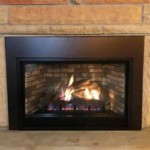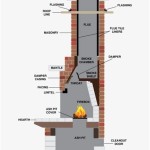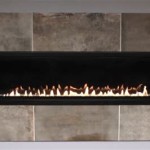The Enduring Appeal of Fireplaces with Tile: A Comprehensive Guide
Fireplaces have served as focal points in homes for centuries, providing warmth, ambience, and a sense of gathering. While the function of a fireplace remains largely unchanged, the materials and designs used in their construction have evolved significantly. One enduring and versatile element is tile. Fireplaces with tile offer a myriad of possibilities in terms of aesthetics, durability, and customization, making them a popular choice for homeowners seeking to enhance their living spaces.
Tile, in its broadest definition, encompasses a wide range of materials, including ceramic, porcelain, natural stone (such as marble, granite, and slate), glass, and even metal. Each material possesses unique characteristics that influence its suitability for fireplace applications. Understanding these characteristics is crucial for selecting the right tile for a specific fireplace project.
The application of tile to a fireplace extends beyond mere decoration. It serves as a protective barrier, shielding the surrounding wall from the intense heat generated by the fire. This protective function is particularly important for combustible materials like wood framing or drywall. Furthermore, tile, especially non-porous varieties, is easy to clean and maintain, resisting soot and ash accumulation, which are inherent byproducts of burning fuel.
Material Considerations for Fireplace Tile
The selection of tile material for a fireplace surround or hearth should be based on a careful evaluation of several factors. These factors include the tile's heat resistance, durability, aesthetic appeal, and maintenance requirements. Each material presents its own set of advantages and disadvantages that need to be weighed against the homeowner's preferences and the specific design of the fireplace.
Ceramic tile is a widely used and affordable option. It is generally made from clay that is fired at high temperatures, resulting in a durable and moisture-resistant material. Ceramic tiles come in a vast array of colors, sizes, and patterns, offering considerable design flexibility. However, ceramic tile is often less heat-resistant than other options, such as porcelain or natural stone, and may be more prone to cracking under extreme temperature fluctuations. It is generally best suited for use on fireplace surrounds rather than directly inside the firebox.
Porcelain tile, a subset of ceramic tile, is manufactured using finer clays and fired at even higher temperatures. This process results in a denser, more durable, and more heat-resistant tile compared to standard ceramic tile. Porcelain is also less porous, making it highly resistant to staining and water damage. Due to its superior performance characteristics, porcelain tile is often a preferred choice for fireplace surrounds and even certain hearth applications, especially those exposed to potential spills or moisture.
Natural stone tiles, including marble, granite, slate, and travertine, offer a luxurious and timeless aesthetic. Each type of stone possesses unique veining, texture, and color variations, ensuring that no two fireplaces will be exactly alike. Natural stone is generally very heat-resistant and durable, making it suitable for both surrounds and hearths. However, some types of natural stone, particularly marble and travertine, are more porous than porcelain and may require sealing to prevent staining. Regular cleaning and maintenance are essential to preserve the beauty of natural stone tiles.
Glass tile provides a modern and sophisticated look. It is available in a variety of colors, shapes, and finishes, including translucent, opaque, and iridescent options. Glass tile is non-porous and easy to clean, making it a practical choice for fireplace surrounds. However, glass tile is typically not as heat-resistant as ceramic, porcelain, or natural stone and is therefore generally not recommended for use directly inside the firebox or on the hearth where it will be exposed to direct flames.
Metal tile can add a unique and industrial touch to a fireplace design. Options include stainless steel, copper, and brass tiles, which can be used as accents or to cover entire surfaces. Metal tiles are durable and heat-resistant, but they can be prone to scratching and denting. Proper cleaning and maintenance are essential to prevent corrosion and maintain their shine. Like glass tile, metal tile is best suited for surrounds and should be kept away from direct flame contact.
Design Considerations and Installation Techniques
The design of a fireplace with tile is a critical aspect of the overall aesthetic of the room. The size, shape, color, and pattern of the tile can significantly impact the visual impact of the fireplace. Careful consideration should be given to the architectural style of the home, the existing décor, and the desired mood and ambiance.
Tile can be used to create a variety of design styles, from traditional to contemporary. For a classic look, consider using natural stone tiles in neutral colors, such as beige, gray, or cream. Subway tiles, arranged in a traditional brick pattern, are another popular choice for a timeless aesthetic. For a more modern look, explore using large-format porcelain tiles in bold colors or patterns. Glass tiles, with their sleek and reflective surfaces, can also contribute to a contemporary design.
The installation of fireplace tile requires specialized skills and knowledge. Proper surface preparation is essential to ensure a strong and lasting bond between the tile and the substrate. The substrate, which is the surface onto which the tile is applied, must be clean, level, and structurally sound. In some cases, it may be necessary to install a backer board, such as cement board, to provide a suitable surface for tiling.
The choice of mortar is also crucial for a successful tile installation. A heat-resistant mortar is essential for fireplaces, as it can withstand the extreme temperatures generated by the fire. The mortar should be applied evenly and consistently to ensure proper adhesion and prevent cracking. Grout, which fills the spaces between the tiles, should also be heat-resistant and stain-resistant. The color of the grout can be chosen to complement or contrast with the tile, depending on the desired effect.
Cutting tiles to fit around the firebox and other architectural features requires precision and specialized tools. A wet saw is often used to make clean and accurate cuts. It is important to leave adequate expansion joints between the tiles to allow for thermal expansion and contraction, which can occur due to temperature fluctuations. Failure to provide adequate expansion joints can lead to cracking and damage to the tile surface.
Maintenance and Safety
Proper maintenance is essential to prolong the life and beauty of a fireplace with tile. Regular cleaning will prevent the buildup of soot, ash, and other debris, which can dull the tile surface and stain the grout. The cleaning frequency will depend on the frequency of fireplace use and the type of fuel burned.
For routine cleaning, a mild detergent and water solution is usually sufficient. Avoid using harsh chemicals or abrasive cleaners, as these can damage the tile surface. A soft cloth or sponge should be used to wipe down the tile, and a grout brush can be used to scrub the grout lines. Rinse the tile thoroughly with clean water and dry it with a soft towel.
Sealing natural stone tiles is important to protect them from staining and water damage. A penetrating sealer should be applied according to the manufacturer's instructions. The frequency of sealing will depend on the type of stone and the level of exposure to moisture. Inspect the grout lines periodically and re-seal them as needed to prevent water penetration.
Fireplace safety is paramount. It is important to ensure that the fireplace is properly ventilated and that the chimney is clean and free of obstructions. Regular chimney inspections are recommended to prevent creosote buildup, which can pose a fire hazard. Keep combustible materials, such as furniture, curtains, and rugs, away from the fireplace. Install a fireplace screen to prevent sparks and embers from escaping into the room.
The choice of fuel is also an important safety consideration. Only use seasoned firewood or approved manufactured logs. Never burn trash, paper, or other materials that can produce excessive smoke or toxic fumes. Always supervise the fire and never leave it unattended. Ensure that a working smoke detector and carbon monoxide detector are installed in the vicinity of the fireplace.

Fireplace Feature Wall Ideas Queen City Stone Tile

Corner Lot Modern Farmhouse Rustic Fireplace Tile Remodel

Fireplace Tile Ideas Why Now Is The Time To Update Your Atlas

Fire Up Your Design Trendy And Unique Fireplace Tile Ideas To Try Now Belk

Hottest Fireplace Trend Tile Flooring America

14 Fresh Designs For Tiled Fireplaces Bob Vila

10 Fireplace Tile Ideas

Farmhouse Fireplace Tile Ideas 11 Ways To Enhance A Fiery Focal Point Atlas Ceramics
Trend Watch Tile Fireplace Surrounds

Fireplace Tiles Best 253 Ideas Designs 2024 Ramirro
Related Posts








